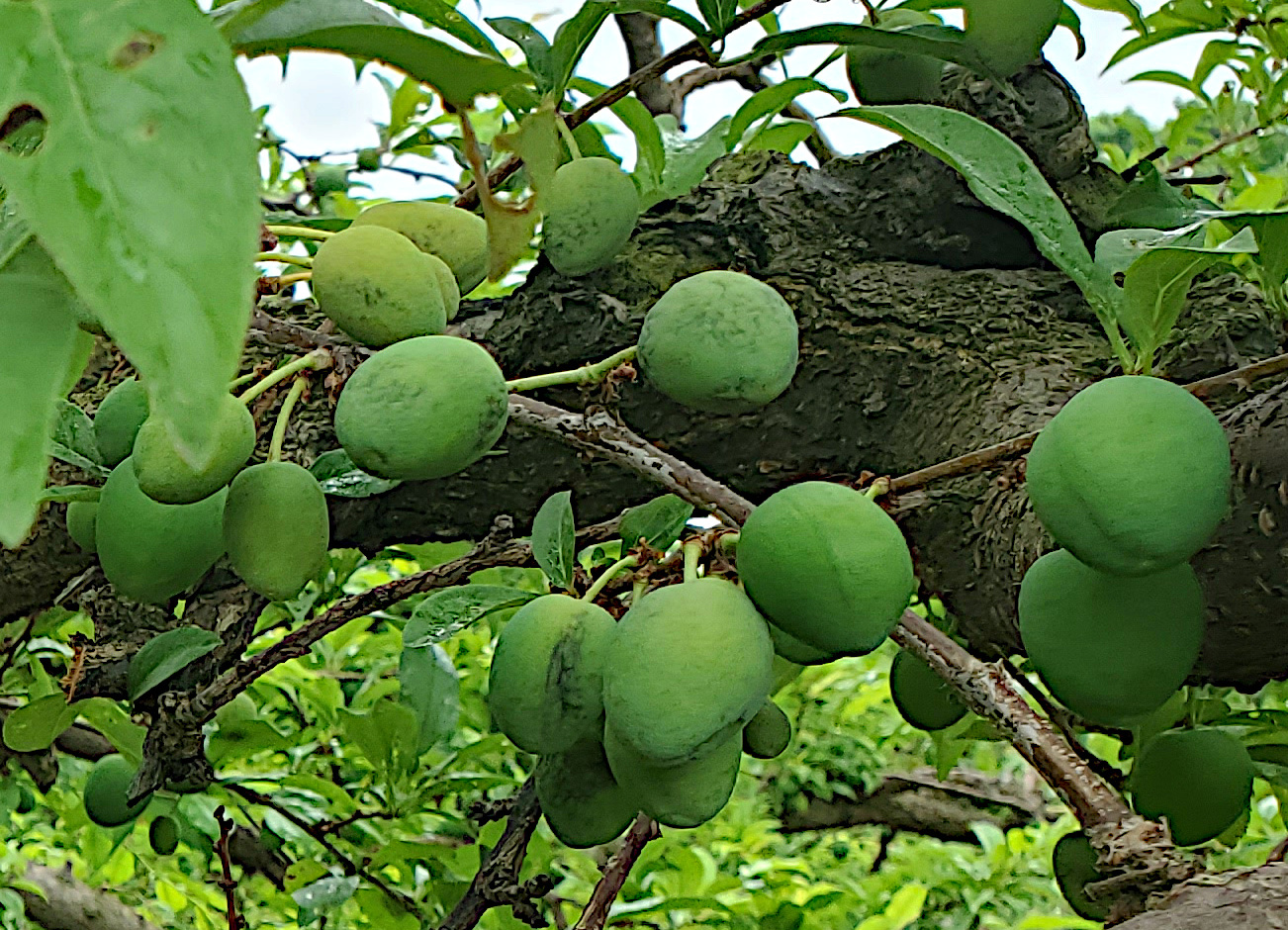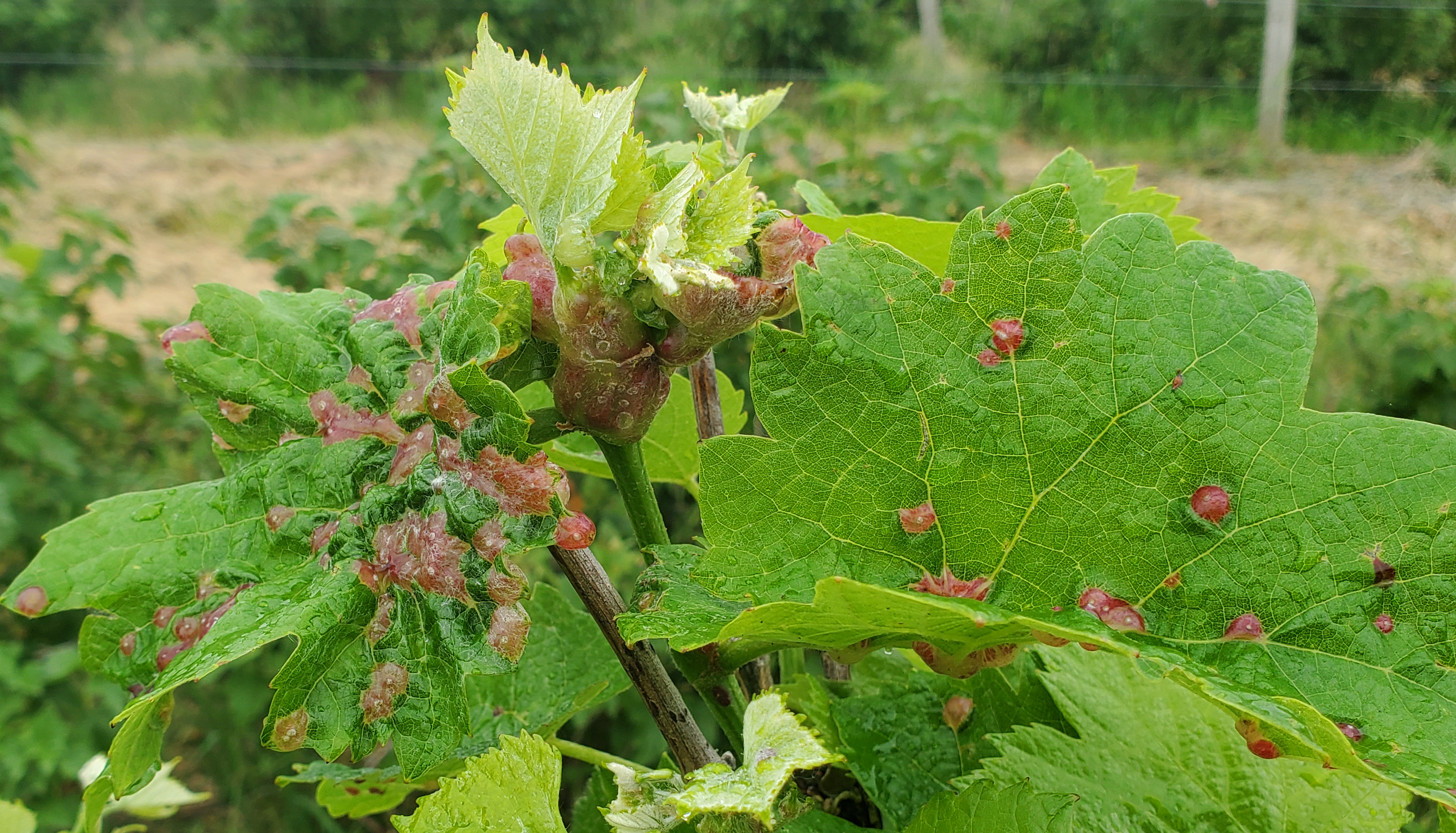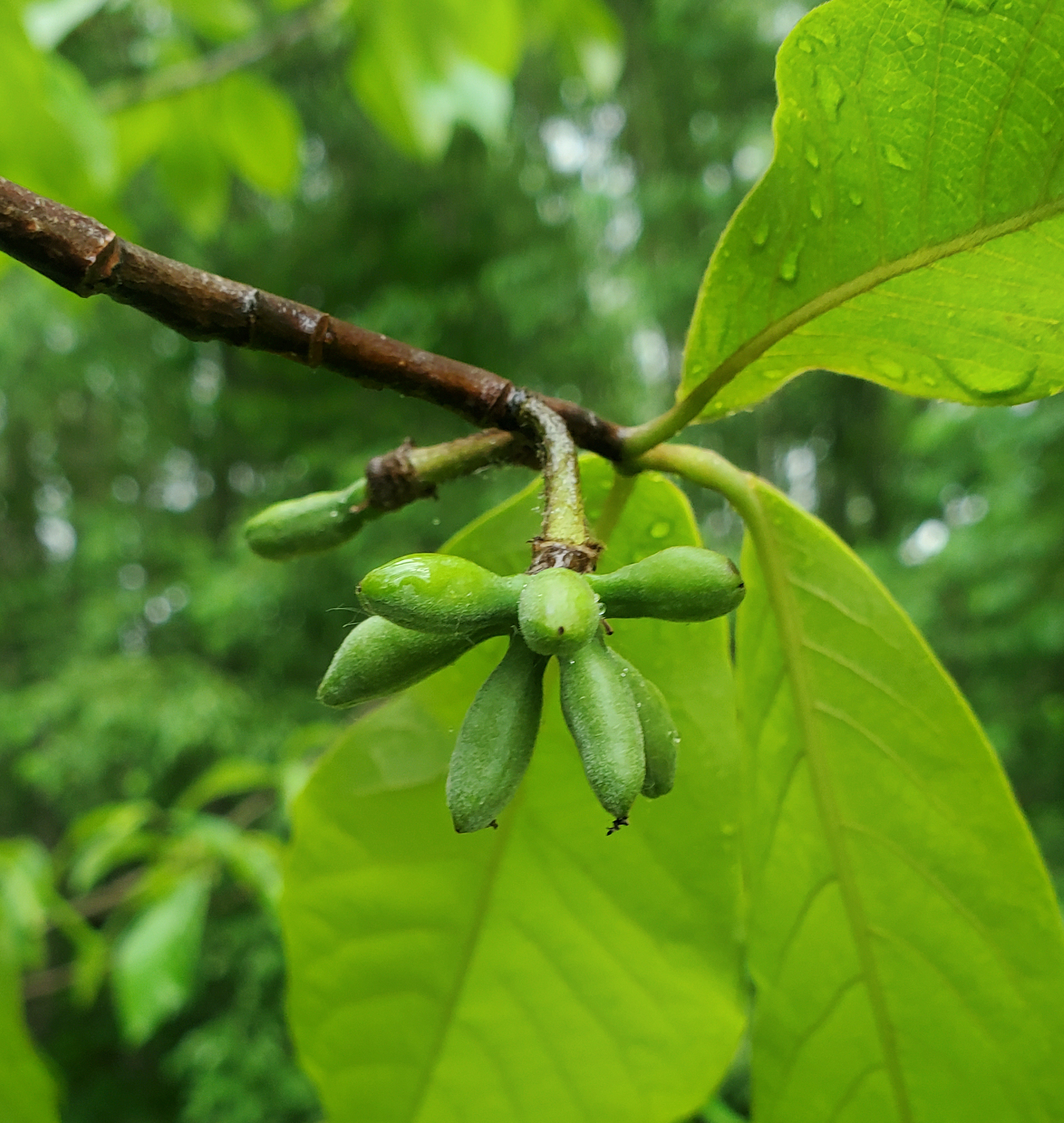Southwest Michigan fruit update – June 8, 2021
With the heat and lack of rain, some crops are beginning to show drought stress. Irrigation is important to maintain fruit and plant growth.

Weather
Last week started with highs in the 70s that climbed to 90 by the weekend. No rain was recorded for the week. There were scattered showers yesterday. The coming week will be a little cooler, but more humid. Highs will be in the low to mid 80s. There will be chances of scattered afternoon showers or thunderstorms Monday through Thursday afternoon. Rainfall amounts will be quite variable, from less than half an inch up to an inch and a half of rain is possible in some areas for the week.
Soils remain dry. We have had only about 5 inches of precipitation for the year. This is 20% of normal for this time of year. Most of lower Michigan is in a D1 level drought. Portions of Van Buren and all of Allegan counties and areas to the north and east are in a D2 (severe) drought condition. Growers who can irrigate should be irrigating.
With the hot week, we picked up a lot of growing degree days (GDD) last week: 189 GDD base 42 and 134 GDD base 50. We are 100 GDD ahead of the five-year average.
|
Southwest Michigan GDD summary from March 1 - June 6, 2021 | |||
|---|---|---|---|
|
Station |
GDD 42 F |
GDD 45 F |
GDD 50 F |
|
Benton Harbor (SWMREC) |
1088 |
903 |
646 |
|
Lawton (Lawton) |
1110 |
922 |
654 |
|
Fennville (TNRC) |
945 |
773 |
539 |
|
Average for the SW region |
1072 |
888 |
630 |
|
Average last week |
883 |
720 |
496 |
Tree fruit
Rain over the past month has been only a fifth of normal, inhibiting most plant diseases except powdery mildews. With the warm weather, humidity and daily chances of rain, disease infection events are likely this week. Even with rain predicted, irrigation is needed on sandy sites. Insect activity has increased with warm temperatures. Plum curculio feeding and egglaying scars are becoming easier to find. San Jose scale males began showing up in the Trevor Nichols Research Center trapline on May 24. Crawler emergence is approximately 400 GDD base 51 F after biofix, still a couple weeks off, depending on the upcoming temperatures.
Periodical cicada appearance has been in the regional and national news lately. This insect has the potential to be found in southeastern areas of Michigan but is not expected to be much of an issue for growers in southwest Michigan.
Apricots are 1.25 inches in diameter with hard pits. The crop looks to be very good at some sites and poor at others. Plum curculio is a concern with the warm evenings. Dry conditions have not been very favorable for bacterial spot. Copper is about the only bactericide labeled for apricot, and most labels do not support post bloom use.
In peaches and nectarines, the predicted harvest date for Redhaven in central Berrien County is July 31. The fruit are generally 28 millimeters with pits likely to harden within a week. Bacterial spot treatments to protect fruit are most effective from shuck split to pit hardening. Warm and wet conditions will encourage development of bacterial spot infections. Oriental fruit moth second generation biofix should be this week. Some flagging shoot tips in peaches are showing up. Flagging shoots is usually an indicator of mature oriental fruit moth larvae or pupae. Plum curculio egglaying activity should be decreasing but feeding damage can continue. Tarnished plant bug feeding on fruit is still ongoing.
In cherries, tarts are 15 to 17 millimeters and pits have hardened. Sweet cherries are increasing in size again now that pits are hard. Recent rains will raise the risk of new cherry leaf spot infections.
In plums, Japanese plums are 21-27 millimeters with hard pits. European plums are 20 millimeters, but pits are not hard yet. Crop prospects for plums look okay to only fair, depending on the site. Black knot control is still ongoing until terminal growth slows. Current warm wet conditions are conducive to bacterial spot infections.

Apple follow-up hand thinning is ending. Fruit size ranges from 25 millimeters (Gala and Fuji) to 34 millimeters (Zestar). Many fruit have low seed counts due to poor pollination. Thinning should focus first on varieties such as Honeycrisp, Fuji and Goldens that initiate bud set first. Summer NAA treatments to encourage return fruiting generally start about five weeks after full bloom, approximately now in central Berrien County.
Scouting for fire blight symptoms should be underway. Codling moth catch continues to be significant. Obliquebanded leafroller biofix was approximately June 1. Oriental fruit moth second generation flight should be starting this week. This biofix is based on calculated degree days rather than current trap catch. Scab ascospore catches are diminishing but are still significant.
Pears are approximately 25-30 millimeters in diameter. Fruit that are not successfully pollinated are dropping. Pear fruit are generally too hard to be a target for first generation codling moth. Plum curculio and tarnished plant bug can target pears at this stage. Pear psylla nymph are starting to appear. Scab can still a threat.
Small fruit
Grapes are blooming. Juice and hybrid grapes that were not impacted by the radiation freezes the first week of May are between first bloom and end of bloom. Most vinifera cultivars are at the immediate prebloom. First bloom was seen on pinot noir. Secondary shoots are continuing to grow on freeze damaged vines. Bloom has been recorded on secondary shoots on Niagara grapes.
Wild grape bloom is ending in southwest Michigan. Wild grape bloom is used as a biofix for grape berry moth. Scout for wild grape bloom on your farm. Biofix is when 50% of clusters are at 50% bloom. May 25 can be used as a general date for wild grape bloom in Berrien County.
Protectant fungicide sprays to control phomopsis, black rot, downy mildew and powdery mildew are the management focus during bloom. Wine grape growers will also want to include botrytis in their disease management plans.

Blueberry is at green fruit. Disease control should focus on anthracnose infections to young green fruit. Now that fruit is sizing, the crop is looking better. Some fields have injury from freezes in May. Shoot growth looks good. In fields without irrigation, the soils are extremely dry. Maintain irrigation to maintain shoot and fruit growth. Most fruit size is determined soon after bloom in the early phase of fruit growth.
Cherry fruitworm and cranberry fruitworm egg laying is underway. Petal fall is typically the appropriate time for managing this pest.
Strawberry bloom is finished for most varieties. Picking of early varieties has started. Labor for harvest has been a problem. As bloom ends growers should consider sprays to protect against tarnished plant bug and flower thrips.
Bramble bloom is ending and fruit are beginning to size.
Miscellaneous crops
Currants June drop is finishing.
Gooseberries are continuing to green up. Fruits are around 1 millimeters in size.
Hops training is finishing. Most varieties are 6-8 feet high. With the dry soils, irrigation is being used to increase shoot length ahead of training. European corn borer biofix was May 25. Larvae are being seen.
Chestnut catkins are continuing to develop. Lecanium scale is showing up on chestnut trees. Mature trees can withstand small populations, but for small trees or heavy populations, a treatment may be necessary to reduce tree stress and buildup of sooty mold. With the hot, dry weather, grasshoppers can become an issue. Some leaf damage on perimeter trees has been observed.
Pawpaw bloom has ended. Fruit are beginning to expand.

Cranberries are greening up slowly. Most beds are approaching bloom. They are in the hook stage.
Upcoming meetings
Our regular Southwest Michigan Monday Fruit IPM Updates are available online. You need to register to receive the Zoom link and password for these meetings. The webinars are free and one pesticide applicator credit is available for each meeting. We had over 70 growers attending our Monday meetings last year.
Related articles
- Periodical cicadas are emerging: Should Michigan fruit growers be concerned?
- Southwest Michigan Fruit Update – June 1, 2021
- Summer options for controlling San Jose scale in Michigan tree fruit crops
- Michigan grape scouting report – June 2, 2021
- Pest management approaches in a winter or freeze damaged grape vineyard
- Banning black rot and Phomopsis from young grape clusters
- Blueberry growers need to focus on Anthracnose fruit rot as bloom ends



 Print
Print Email
Email